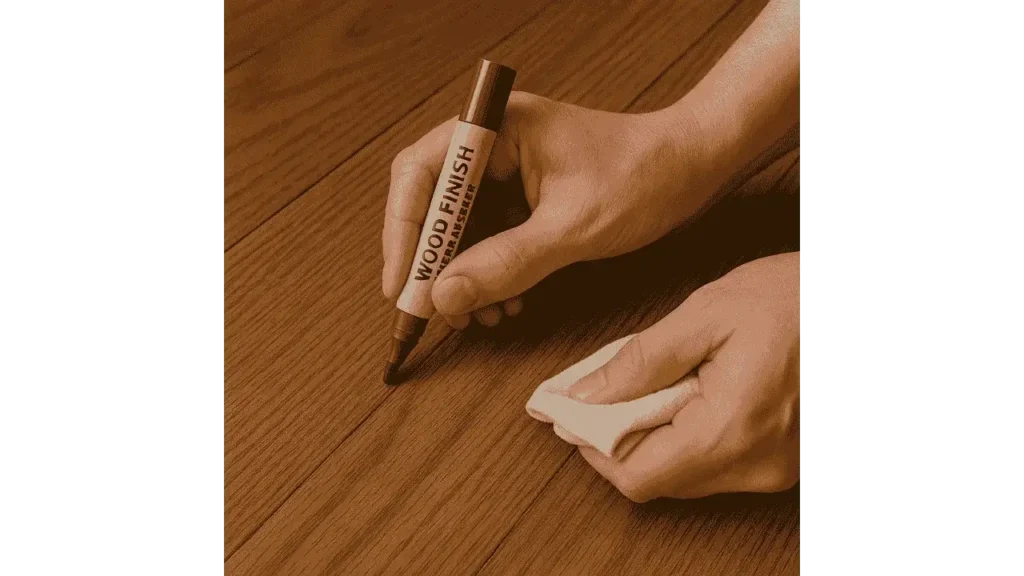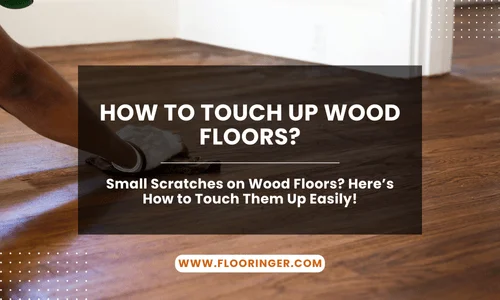Keeping wood floors looking their best requires occasional touch-ups to address minor scratches, scuffs, and signs of wear. These small imperfections may seem insignificant, but they can accumulate over time, affecting the overall appearance and longevity of your flooring. Touching up your wood floors properly not only improves their look but also serves as a preventive measure against more serious damage.
“Routine maintenance on hardwood surfaces can significantly delay the need for full refinishing,” notes Jason Reed, a professional flooring contractor at TimberFix Solutions.

Why Touching Up Wood Floors Is Important?
Wood floors endure constant pressure from foot traffic, shifting furniture, pet claws, and unexpected spills. Even the smallest scuff can expose the wood to moisture, leading to staining or warping if ignored. Addressing these marks early on keeps your floors protected and maintains a polished look. Moreover, quick touch-ups reduce the need for costly, labor-intensive refinishing projects in the future. Giving attention to small imperfections early can go a long way in preserving the integrity and charm of your wood floors.
Wood Floor Touch-Up Options
Choosing the Right Solution
The success of your touch-up efforts largely depends on selecting the appropriate product for the level and type of damage. Each method caters to specific issues and offers different levels of coverage. Knowing when to use each tool can prevent missteps and keep your floors looking consistent and natural. Always test your chosen solution on a discreet spot before applying it broadly.
Read More: How to Get Drywall Dust Off Wood Floors?
Wood Markers and Stain Pens
These are best for superficial scratches and light scuffs. Choose a color that closely matches your floor. Once applied and gently buffed, these pens can blend minor marks almost seamlessly into the surrounding area. They’re great for spot-fixes and do not require lengthy drying times, making them perfect for quick touch-ups.
Wax Fillers
For deeper scratches and gouges, wax filler sticks offer a simple yet effective fix. They’re available in various shades to match common wood tones and are ideal for localized damage. Wax fillers can be buffed to a smooth finish, restoring the continuity of the wood grain appearance.
Floor Polish and Revitalizers
Used primarily for general dullness and fine surface wear, floor polishes add a protective sheen and help rejuvenate the floor’s appearance. They’re most effective when used periodically as part of routine maintenance. These products can help extend the time between major refinishing jobs.
How to Touch Up Wood Floors?
To get the best results, start with a clean, dust-free surface. Use a microfiber cloth or vacuum designed for hardwood to ensure no particles interfere with the touch-up. Clean surfaces help touch-up products adhere better and prevent buildup under finishes. This preparation step should never be skipped.
Touching Up with Wood Markers and Stain Pens
Apply the pen directly onto the scratch, following the wood grain. Let it sit briefly, then wipe off any excess with a dry cloth. Allow the area to dry completely before walking on it or applying any other treatments. These pens are ideal for frequent small touch-ups across high-traffic zones.
Using Wax Fillers for Deeper Scratches
Warm the wax slightly in your hand, then press it into the damaged area using a putty knife or soft cloth. Smooth out the surface until it’s level with the floor. Buff gently to blend with the surrounding finish. Repeat if needed to fill deeper areas evenly without overfilling.
Maintaining Touched-Up Wood Floors
Preserving your hard work requires good habits. Use felt pads under furniture legs, avoid dragging heavy items, and clean the floors regularly with pH-balanced wood cleaners. Promptly wipe up spills and avoid soaking the floor. Reapply polish or protective treatments as needed, especially in high-traffic areas. These habits ensure minor fixes last longer and your floors continue to shine.
Final Takeaways
Touching up wood floors is a simple yet powerful way to keep your home looking clean and well cared for. With the right tools, proper technique, and routine maintenance, you can prolong the life of your wood floors while keeping them in excellent condition.
“You don’t need to redo the whole floor; just give attention to where it’s needed, and the difference will speak for itself,” says Marla Dunham, interior renovation specialist at HomeCare Design Co.
